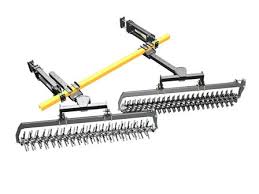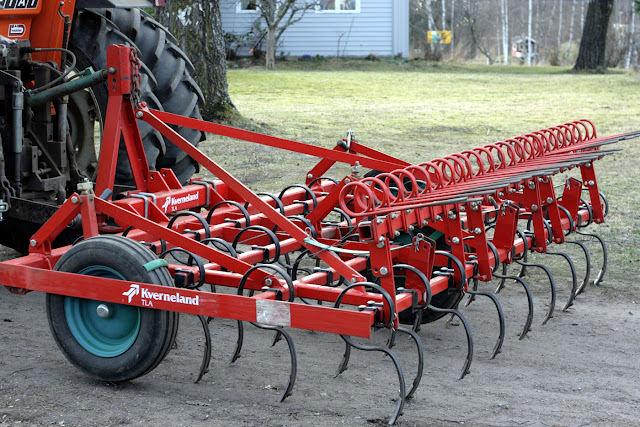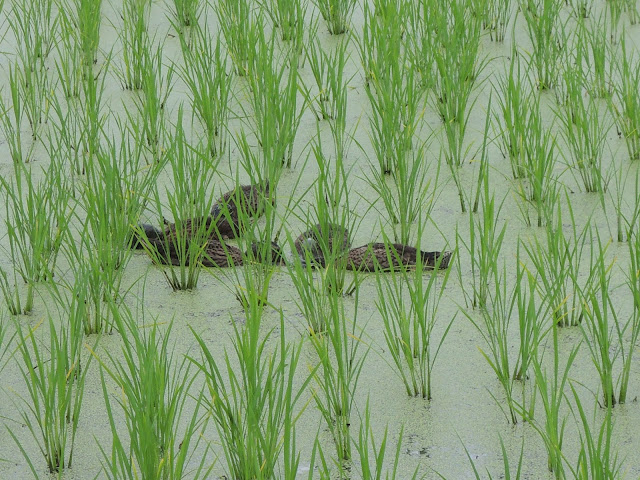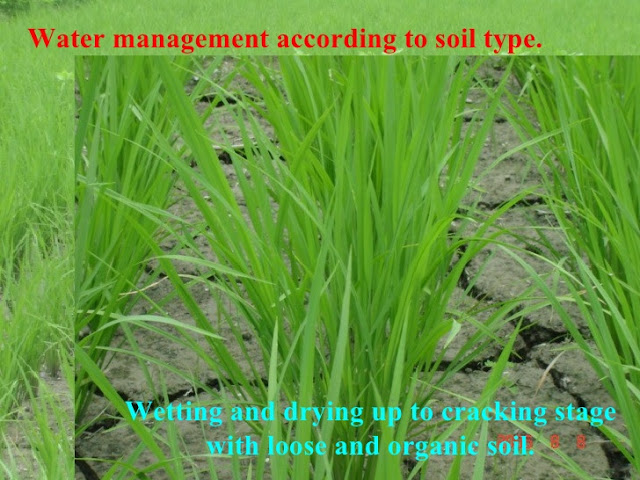Lasway.Jr
JF-Expert Member
- Jul 25, 2015
- 230
- 402
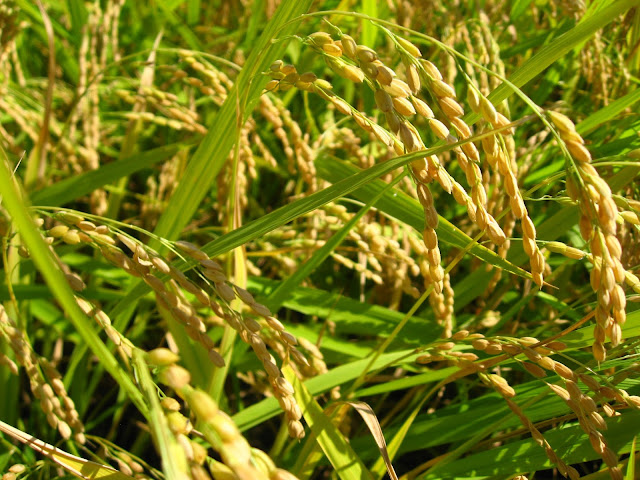
Get more profit by making the proper use of technology in agriculture especially in rice because is the most used staple food world wide in many countries include our country Tanzania, in system of rice intensification farmers earn up to 70 bags(100kg) per hectare approximation farm price of Tsh 150,000/= per bag will be equal to Tsh 10,500,000/= compared to 40 bags Tsh 150,000/= *40 bags equal to Tsh 600,000/= per hectare when using convection method(indigenous methods)
so get brief on how to increase production in rice farming
SYSTEM OF RICE INTENSIFICATION (SRI)
The demand of water for irrigation purposes in Tanzania outstrips the amount of water available for irrigation and other demands. On the other hand, the demand for more food to feed the growing population is increasing, calling for the need to have technologies and farming practices that ensure more food production while minimizing water uses. Rice is among cereal crops grown in Tanzania, and it can assist in meeting the food demand for the nation. Majority of rice producers in Tanzania and Sub-Saharan Africa (SSA) are subsistence farmers and they practice continuous flooding, a technique that requires much water. In addition to using large amounts of water, the conventional practices of growing paddy using local varieties transplanting process are implemented when seedlings are more than 21 days old, and 3 - 4 seedlings are transplanted in one hole. This practice results in low yields, and low water productivity and water use efficiency. The system of rice intensification (SRI) on the other hand, is a promising new practice of growing paddy rice that has proven to be very effective in saving water and increasing rice yields in many parts of the world. SRI practice is spreading fast and it has been adopted in many countries. The SRI practice has been introduced in Tanzania during the last 3 years as such it is not widely practiced. ( Z. Katambara et al. / Agricultural Sciences 4 (2013) 369-375)
So as the part of water management practices this article will help many of rice cultivars on how to apply this technology in their field for yield profusion and expanding their income because the technology has proven true and benefit in many parts of Tanzania like in Lower Moshi irrigation scheme, Kilombero Plantations Limited,( 2006), Mkindo and Dakawa in Morogoro region
The technology is more profitable and well adaptable by any farmer for example for a well managed farm yield in SRI goes upto 6.3 tons/ha, which is higher than conventional practice that produce 3.83 tons/h so this remark more than 60% increase in yield
It is estimated that to about 24-30% of the world accessible fresh water resources (rivers,lakes,springs,aquifers) are used to irrigate rice(IWMI 2007)
SYSTEM OF RICE INTENSIFICATION (SRI) - PRINCIPLES AND METHODS
1. Principles
SRI is based on the following principles:
- Young seedlings between 8-12 days old (2-3 leaf stage) are planted
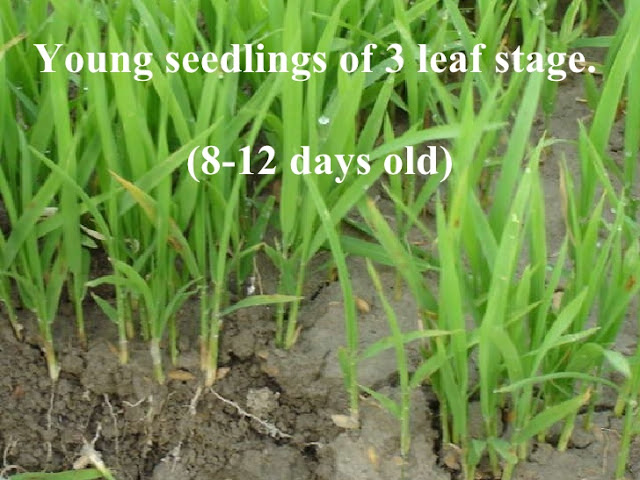
READY FOR TRANSPLANTING
this help the plant to have proper time on the field and to develop primary roots in the soil, Transplanting of matured seedling as in convection method render disturbance of the plant root and make difficult for its to incorporate well in the soil for strong formation for plant standing and able to form and hold tillers in summary this help to preserve potential for tillering and rooting ability
- Careful planting of single seedlings rather than in clumps that are often plunged in the soil;
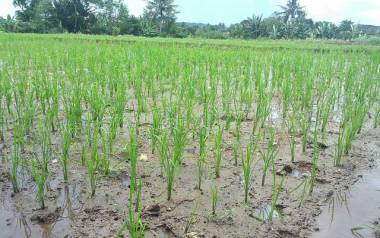
- Wider spacing at 25 cm x 25 cm. in square planting rather than in rows;
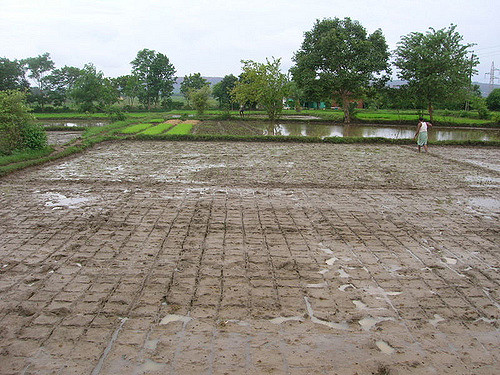
planting in a proper spacing reduce plant light competition and plant get good space to absorb sunlight for photosynthesis process by which green plant manufacture their own food, and this deliver more healthy grains
- Use of cono-weeder/ rotary hoe/power weeder to aerate the soil as well as controlling weeds;(kuchabanga mpunga) in swahili
- also here disc harrow can be at first before planting in order to make the soil tilth for paddy root to penetrate well also make good movement of water and air in the soil, moreover for the small scale farmers power tiller mounted with a harrow is used or hand rake and any other means to make the soil suitable for planting

HAND RAKE

HARROW MOUNTED ON A TRACTOR
- Alternate wetting and dry method rather than continuous flooding in the field
- here is there SRI plays the role to save water agronomic-ally engineering expert depends on the soil type in your field irrigation interval and duration will be computed so as you can be aware on how much water to irrigate your crop and for how long also locally the field is flooded for a while and next irrigation follows after field drying or after the soil develop some cracks

FLOOD THE FARM

WAIT UNTIL THE SOIL DEVELOP CRACKS AS THE PICTURE THE IRRIGATE AGAIN
- Use of organic manure or vermicompost / FYM(farm yard manure) in SRI organic manure prove better than inorganic fertilizers because these encourage the growth of bacteria which help in nitrogen fixing also render harmless to the soil for future use more organic manure nutrients last longer in the soil than inorganic one
- *next article click here seedbed preparation
Prepered by
Lasway Octavian Justine
Irrigation and water resources Engineer
Sokoine university of Agriculture
CEO; GREEN AGRICULTURE
0763347985
Green Agriculture Skills
